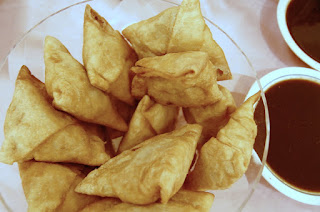Most folks are content to let their henna just fade into the sunset, but sometimes you need to be henna-free for work, school, church, etc. But you must be careful about trying to get rid of a henna stain, especially a fresh one.
The website Bold Sky recently ran an article titled "How To Remove Mehndi From Hands In One Day."
Uh ... one day???
Making a henna stain disappear in a single day would require two things:
- Physically removing the skin cells that have been dyed by the henna (exfoliation), and/or
- Chemically breaking the bond between the henna dye and the skin cells (bleaching)
In my experience, a recent henna stain is just not going to come off all at once. Unless the design has significantly faded already, nothing safe will take that stain off instantly.
Let's review the methods recommended in the article and how safe and effective they are:
Olive oil: Can't hurt, but the olive oil itself probably isn't doing anything. The recommended rubbing action can help loosen skin cells that are ready to slough off.
Chlorine and water solution: No no no no no no no NO!!!! The article offers no guidance on how much chlorine to put into the water. This is very dangerous. Messing around with a chlorine solution that is too strong could burn your skin. If you want to try chlorinated water, go to a swimming pool.
Baking soda and lemon: If you're not allergic to citrus, okay, but I wouldn't recommend letting it sit on your skin. Simply combine the baking soda and juice and gently scrub the skin, then rinse.
Bleaching powder: The article doesn't specify what kind of "bleach," but my short answer is NO. Just no. Do a Google search on "dangers of skin bleach" and see what I mean.
Potato juice: Um ... okay. Never heard of that one, never tried it, but as long as you're not allergic to potatoes, probably can't hurt.
Here's my preferred method for fading a henna stain: Soak in a warm bath for 10 to 15 minutes, then use a cotton washcloth to gently scrub henna-stained areas. If the stain is a week or more old, most or all of it will come off. If it's a fresh stain, however, you will have to be patient.
Article adapted from my blog post on the Blue Lotus Mehndi website titled "Getting RID of your henna stain ... safely!"



